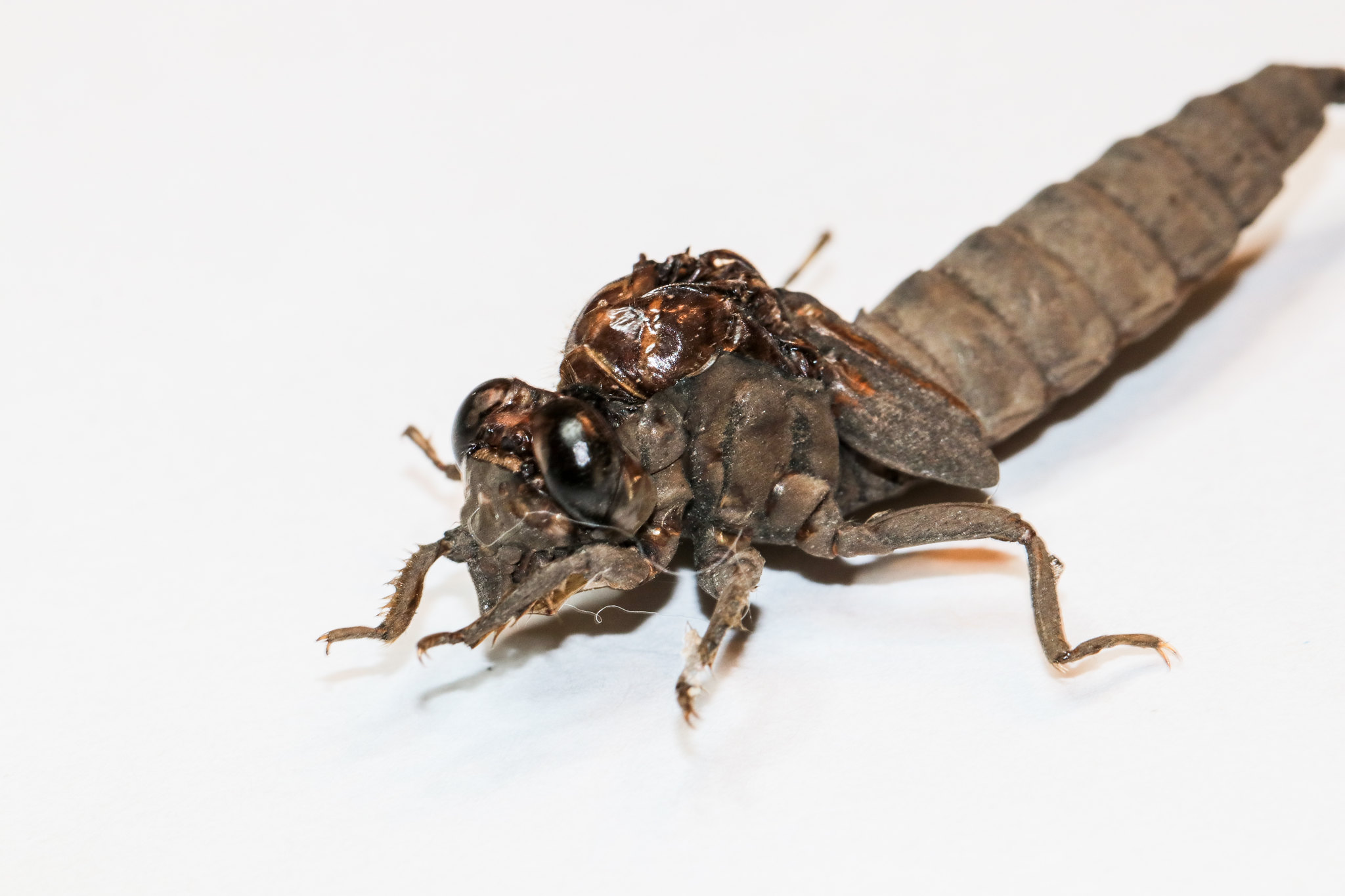Dragonfly and it's exuviae.
Jan 16, 2022 08:24:26 #
Nature can be strange. Reminds me of the Body Snatchers. Great info and photos, Doc.
Jan 16, 2022 08:41:20 #
ecobin wrote:
Nature can be strange. Reminds me of the Body Snatchers. Great info and photos, Doc.
Thanks Elliott. Yes that is a very strange exuviae. So glad you liked them. Take care my friend.
>i< Doc
Jan 16, 2022 08:43:01 #
Jan 16, 2022 09:14:12 #
randave2001 wrote:
Quite fascinating, Doc.
So glad you think so Dave. It was quite an interesting exuviae. I thought others might find it interesting too. In the middle of the doldrums now. 4 months to next dragon season. Take care my friend.
>i< Doc
Jan 16, 2022 10:05:48 #
Jan 16, 2022 10:44:50 #
Jan 16, 2022 12:02:56 #
Jan 16, 2022 12:53:42 #
Ahh! You made me learn something new! I've used 'exuvia' in the past, thinking it was ONE cast skin. But that's a neologism, not a 'real' Latin word, and not in general use (e.g. not in the Webster's on-line). And 'exuvium' means something else - booty or spoils! Exuviae is a plural noun that is used for any cast body covering, whether in pieces or whole, always pleural form. Thank you, good to know! A little less ignorant now - one word at a time.
Curious: is the breathing/jet/anus orifice at the end of the terminal spike in the nymph? (Guess I have a bit more ignorance to dispel.)
Curious: is the breathing/jet/anus orifice at the end of the terminal spike in the nymph? (Guess I have a bit more ignorance to dispel.)
Jan 16, 2022 13:15:31 #
docshark wrote:
Dragonflies of different species lay their eggs in... (show quote)
Highly educational and great images. Thanks, Doc.
Bubba
Jan 16, 2022 14:26:17 #
Jan 16, 2022 14:32:31 #
Very interesting, Doc! I am glad I caught this post. This may be a species where the immature stage breathes through a long snorkel while under water.
Jan 16, 2022 14:45:32 #
angler wrote:
Excellent set Doc.
So glad you enjoyed it Jim. It's a very strange skin but the emerged adult is just beautiful. (Well, at least it is to me.)
>i< Doc
Jan 16, 2022 14:48:26 #
sippyjug104 wrote:
Doc, this is a super-fantastic series.
Thanks for that Gary. Nothing like your shots. It was just a 100mm macro hand held with a small light source. I have just found this a very interesting shed and the transformation from naiad to adult is amazing to me.
>i< Doc
Jan 16, 2022 14:51:13 #
Earnest Botello wrote:
Very good sets, Tony.
Thanks Ernie. I appreciate the fine assessment of my work. I just thought people would appreciate the difference between the naiad and adult.
>i< Doc
Jan 16, 2022 17:17:15 #
docshark wrote:
Dragonflies of different species lay their eggs in... (show quote)
these are beautiful shots, doc, and interesting and excellent information as usual!

If you want to reply, then register here. Registration is free and your account is created instantly, so you can post right away.














